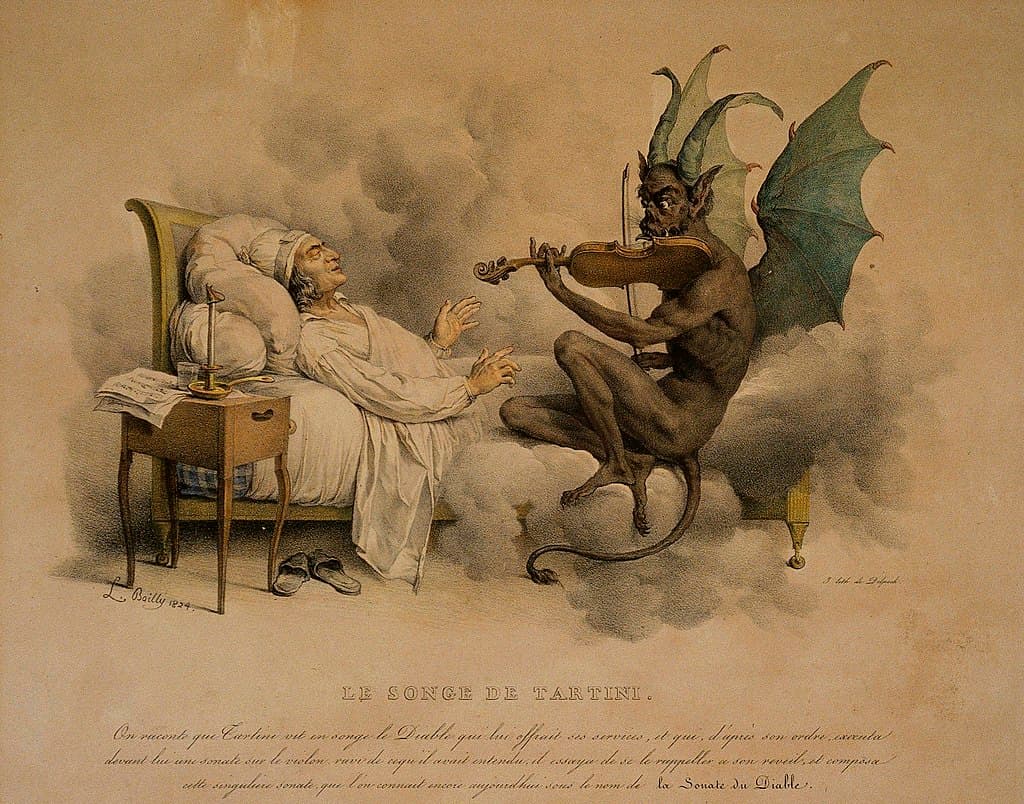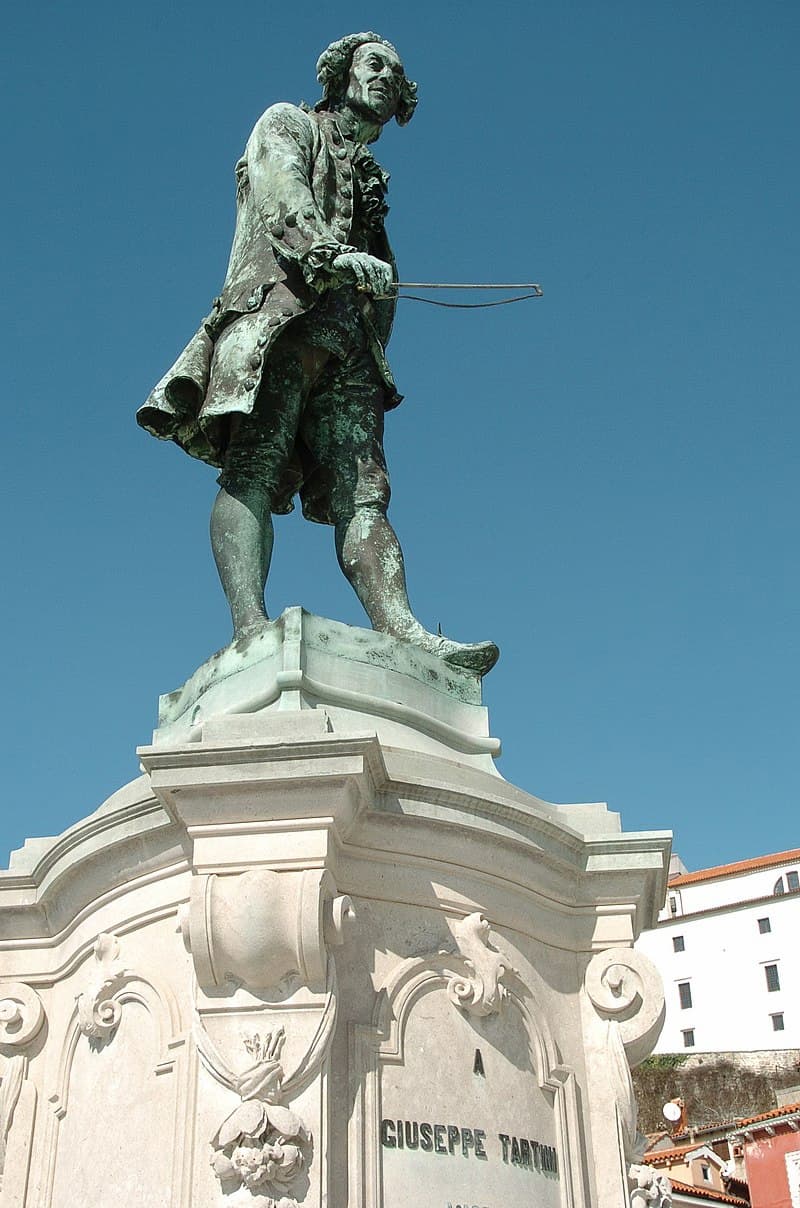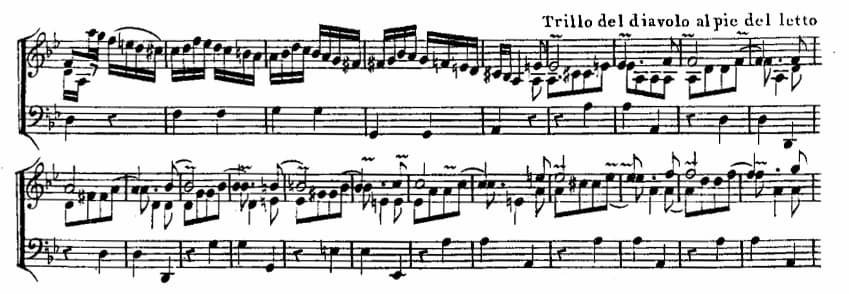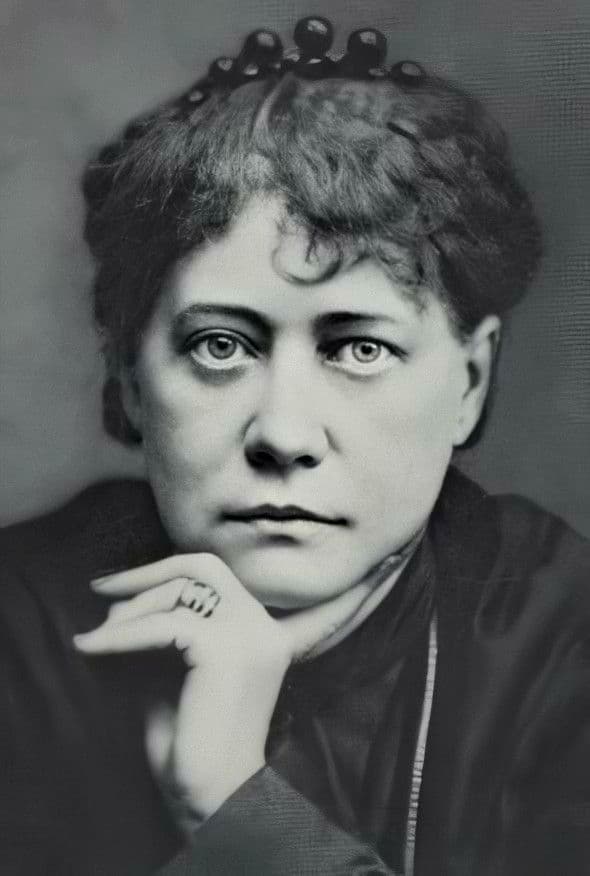Giuseppe Tartini, born 8 April 1692 in Pirano, then part of the Venetian Republic but today part of Slovenia, was proclaimed “the finest musician in the world.” His work as a violinist, composer, and teacher was enthusiastically admired, and in a somewhat shadowy way, his fame has persisted through the nineteenth and twentieth centuries. The primary reason for his lasting fame rests on a story he told to the French astronomer Jérôme Lalande.

“Tartini’s Dream” by Louis-Léopold Boilly (1761-1845). Illustration of the legend behind Giuseppe Tartini’s “Devil’s Trill Sonata”.
“One night, in the year 1713,” Tartini reports, “I dreamed I had made a pact with the devil for my soul. Everything went as I wished: my new servant anticipated my every desire. Among other things, I gave him my violin to see if he could play. How great was my astonishment on hearing a sonata so wonderful and so beautiful, played with such great art and intelligence, as I had never even conceived in my boldest flights of fantasy. I felt enraptured, transported, enchanted: my breath failed me, and I awoke.”
Giuseppe Tartini: “Devil’s Trill Sonata” (Christian Curnyn, harpsichord; Catherine Rimer, cello; Thomas Dunford, theorbo; Nicola Benedetti, violin)
Tartini continues, “I immediately grasped my violin in order to retain, in part at least, the impression of my dream. In vain! The music which I at this time composed is indeed the best that I ever wrote, and I still call it the “Devil’s Trill,” but the difference between it and that which so moved me is so great that I would have destroyed my instrument and have said farewell to music forever if it had been possible for me to live without the enjoyment it affords me.”

Monument of Giuseppe Tartini
The contemporary musicologist Charles Burney called the “Devil’s Trill Sonata” a ”triumph of the imagination,” but some of the best stories have a real connection to life. Tartini was destined to become a monk, and he was sent to Padua and placed under the tutelage of the local friars. Dressed as a priest he participated in church services at the Cathedral, but in his spare time, he much preferred to dabble in the art of fencing and devoted his time to the study of music.
Giuseppe Tartini: “Devil’s Trill Sonata” (version for solo violin) (Michael Barenboim, violin)
Tartini next fell in love with a woman from a seriously poor neighborhood, which rather outraged his father. Tartini nevertheless married Elisabetta, and it was soon discovered that his bride had been the lover of the Cardinal of Padua. Cardinal Giorgio Cornaro was a powerful man, and he reacted violently and brought a charge of abduction against the groom. When the local police were actively searching to arrest him, Tartini escaped the city and took refuge in the monastery of the Franciscan monks in Assisi. Locked in a monastery for at least three years, or at least unable to leave the city, Tartini devoted himself tirelessly to the study of the violin, receiving guidance from Bohuslav Matěj Černohorský.

Giuseppe Tartini’s “Devil’s Trill Sonata”
According to Tartini’s account, his encounter with the devil and the composition of the “Devil’s Trill Sonata” should have dated from around his time in Assisi. No doubt, he must have had plenty of spiritual experiences in the monastery; however, scholars today believe that the work was likely composed as late as the 1740s, “due to its stylistic maturity.”
Giuseppe Tartini: “Devil’s Trill Sonata” (arr. Hubay) (Ferenc Szecsődi, violin; István Kassai, piano)
Much later in life, Tartini wrote, “the Devil’s Trill Sonata was so inferior that if I could have subsisted on other means, I would have broken my violin and abandoned music forever.” In the event, the work was not published until 1799, almost thirty years after the composer’s death. More so than the music, the well-known story of the origin of the sonata has kept the work alive. The tale was prominently retold in the late 19th century by the Russian mystic and author Helena Petrovna Blavatsky, better known as Madame Blavatsky. Blavatsky co-founded the Theosophical Society in 1875 and was either called an enlightened Sage or derided as a charlatan. In the event, her theosophical doctrines “influenced the spread of Hindu and Buddhist ideas in the West as well as the development of Western esoteric currents like Ariosophy, Anthroposophy, and the New Age Movement,” and we might mention that Alexander Scriabin was a big fan. Tartini makes an appearance in a short story entitled “The Ensouled Violin,” found in the aptly named collection Nightmare Tales. And the sonata itself has been kept alive in countless arrangements, focusing either on theatrical gestures, craziness, excessiveness, exaggeration, hysteria, or even ecstasy. Not to be outdone, Tartini’s story continues to inspire as evidenced in a 1972 poem by Lois Drapin:

Helena Petrovna Blavatsky
The night Tartini slept, he woke the Devil.
The creature came to him, unchained and crazed.
The rabid dog strikes first at his own master.
The creature came to him whose flesh he craved
And stood before him freed from his horsehair grave.
And Tartini screamed the scream that loosed his soul
His body twisting with his night-hawk call.
For more of the best in classical music, sign up to our E-Newsletter
Giuseppe Tartini: “Devil’s Trill Sonata” (arr. Kreisler)

One of the most beautiful pieces of music I’ve ever heard. What I would do for that kind of talent. I love the story behind it. You have to wonder if Tartini really did believe the devil came to him that night.